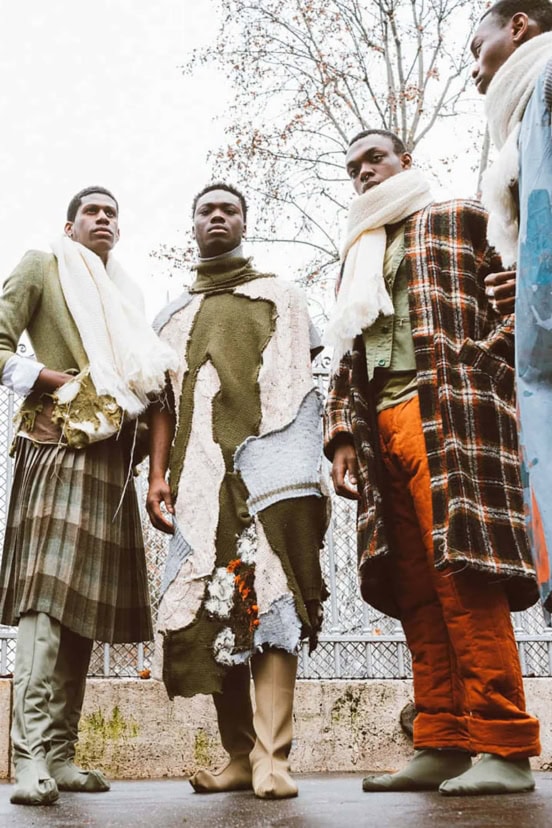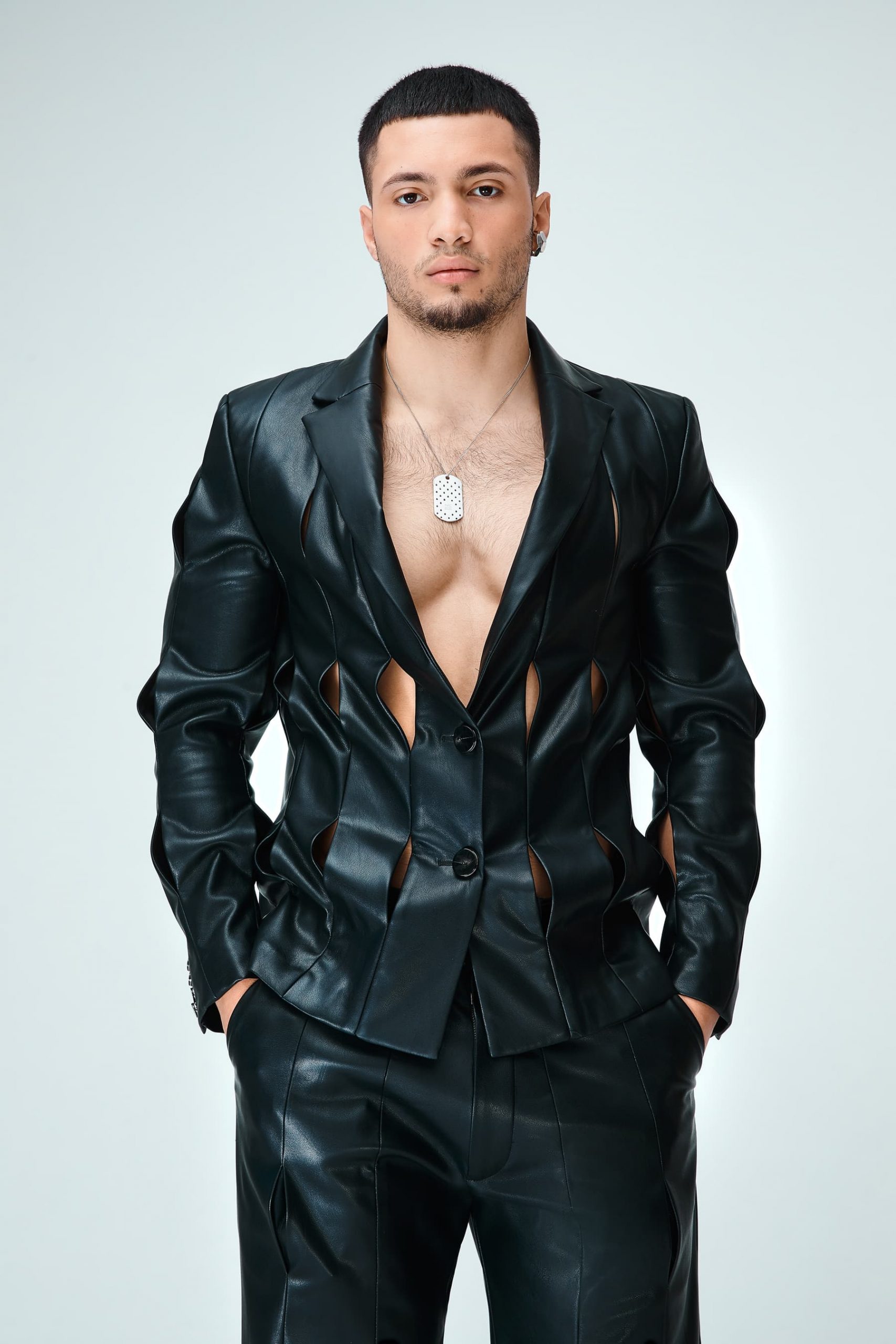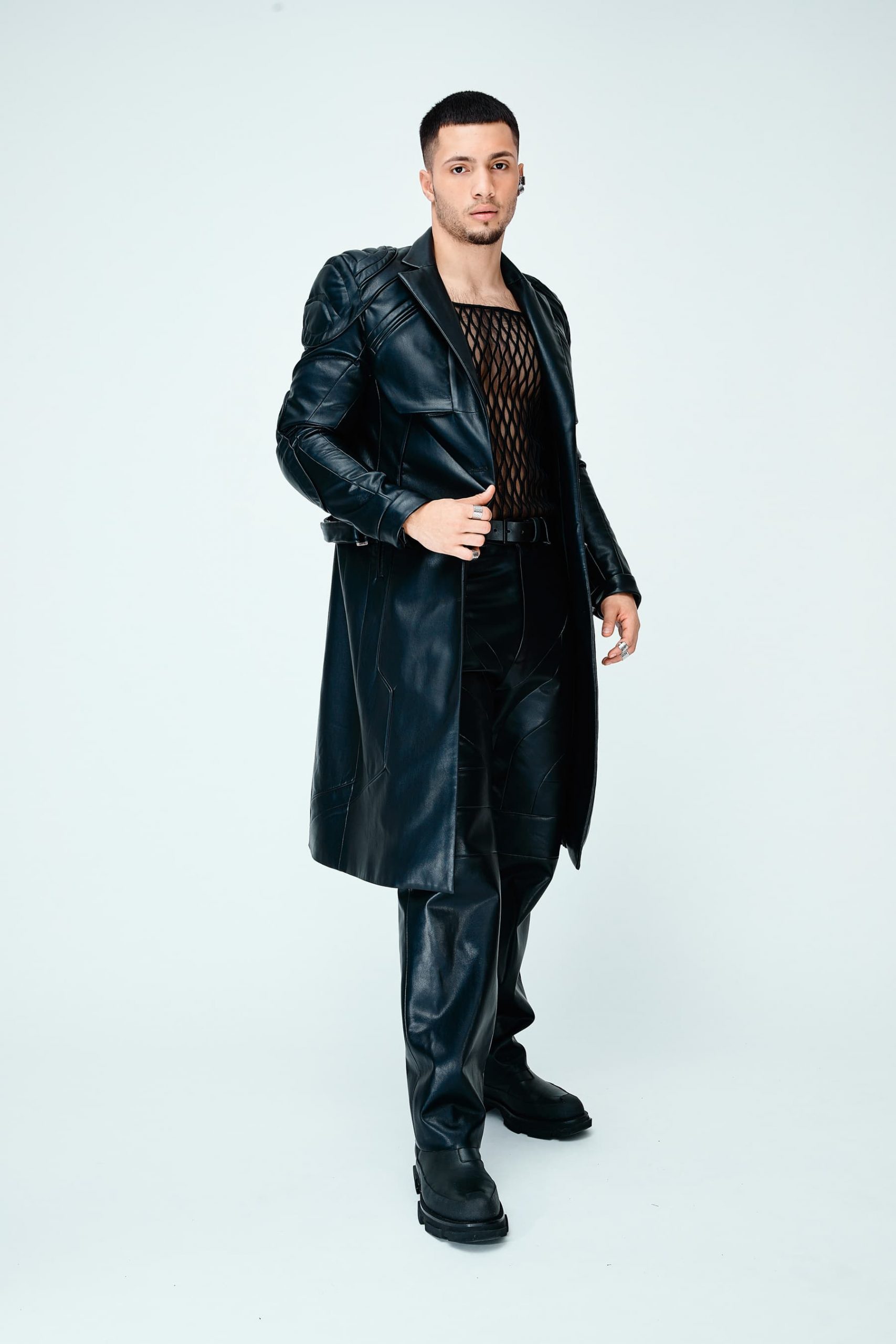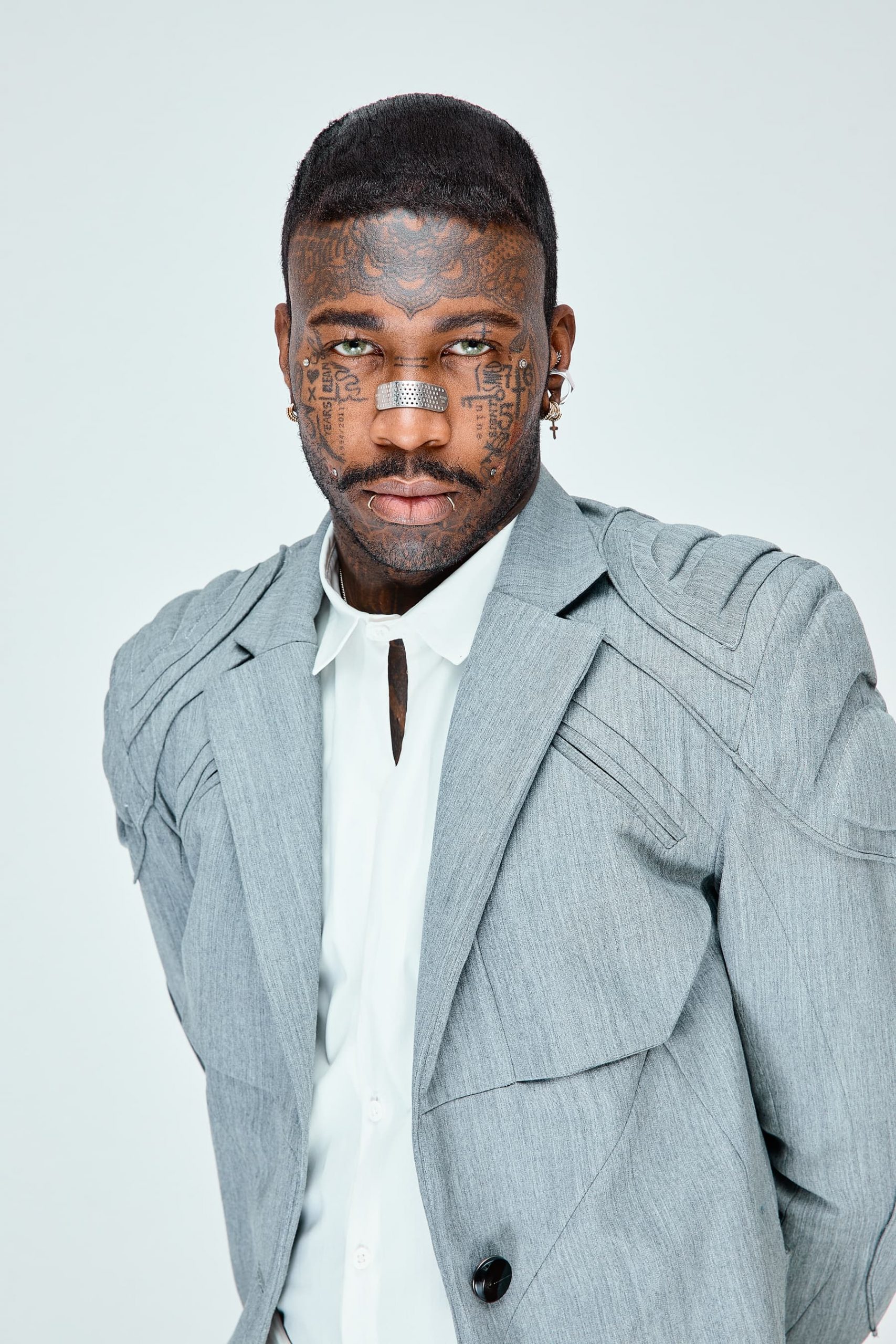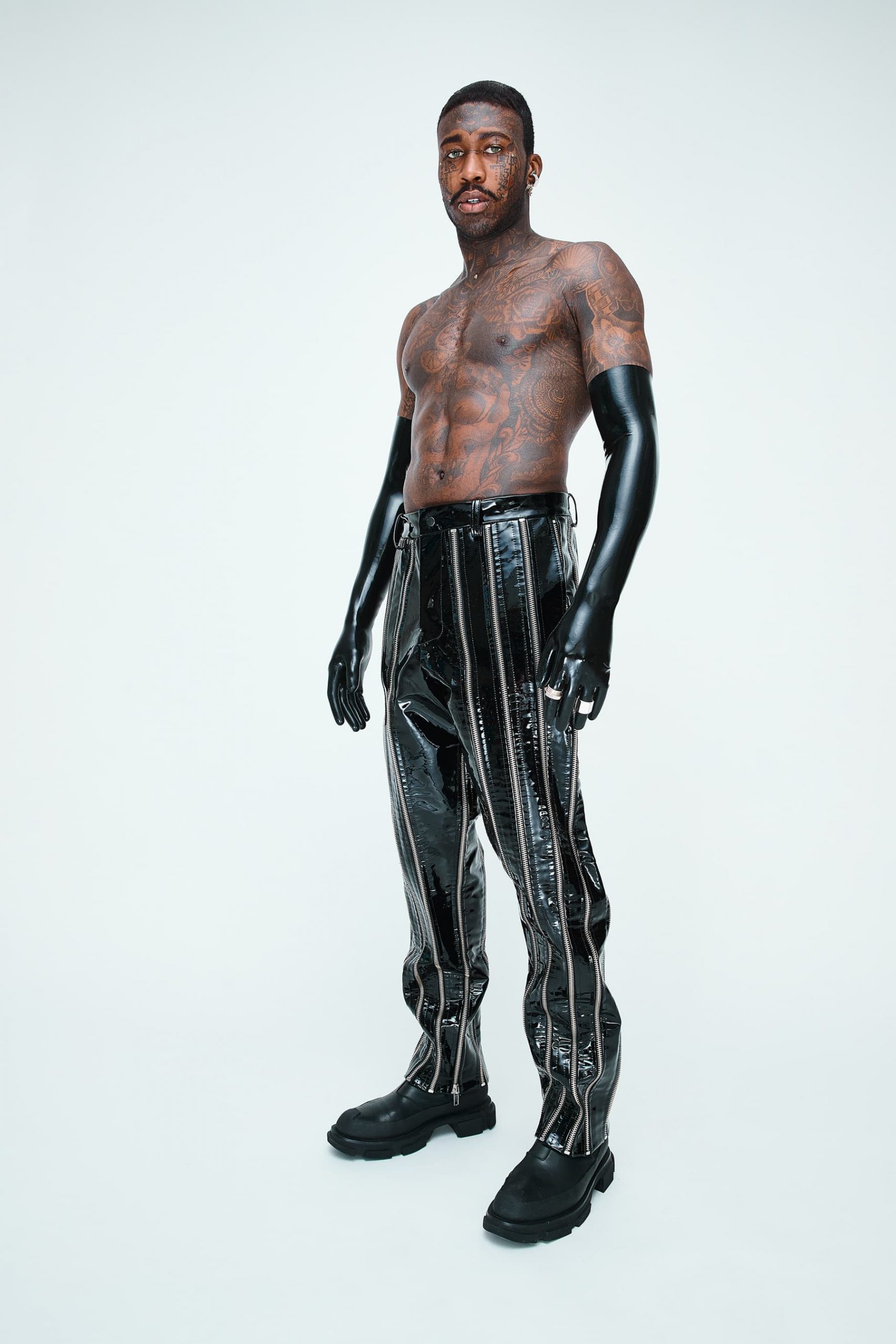Review of The American Collections Day 2 – NYMD, Maisie Wilen, Geoffrey Fall 2021 Fashion Shows
On the Precipice of a Cliff, Edging Towards A Ranking of the Trade Shows
By Long Nguyen
On the second and first full day of the American Collections, the digital shows felt more like a journey to one of those big commercial trade shows like those big gatherings in the past for brands and store buyers with names like MAGIC, COTERIE, CAPSULE, DESIGNERS AND AGENTS, COAST, AGENDA, NYMS by NAMSB, PROJECT, and MRKET NY and LV. These trade shows are the primary meeting places where retailers engaged with brands and placed orders for the forthcoming season, meeting commerce and sales’ minds by not creating fashion.
The American Collections calendar’s hollowness does not speak well for the future of fashion in New York. Although more glamorous, the brand new name does not hide that so many listed on this official calendar would never have merited a time slot in the past.
Then, the ‘fashion calendar’ was rigidly controlled with time slots embedded in stone, and a schedule modification was like well moving a mountain. The show calendar was for brands that stand for something and brands that have something to say about fashion.
The New York shows this season lacked the heavyweights and the vanguards of American fashion, both scattered since the pandemic a year ago.
At the end of the three and a half-day affair, the big question will be whether New York can get back to being a ‘fashion’ capital instead of just a ‘commercial fashion’ city. And in this first full day, there are a few exceptions among the vast troves of retail or e-commerce friendly collections.
NYMD
For example, the New York Men’s Day or NYMD, once a stand-alone day promoting men’s fashion, is now being incorporated into the main calendar. The participating designers this time, with a few returning brands, were a set of designers whose work is more imitative and more commercial oriented than those having a strong individual point of view. Some of the presentations had been, in the past, about emerging brands, each shouting a specific message.
Perhaps more worrisome is that the NYMD platform is less of a platform to promote designers with new ideas; instead, the new roster for this season features a range of commercial-oriented brands, a possible reflection of the reality on the grounds.
The designer brands participating in this digital season aren’t underdogs designers waiting for the chance to breakthrough. On the whole, they are not innovators bringing in new fashion ideas, values, and reasons to exist. Instead, they channeled existing sentiments and refurbished the ideas already out there in circulation, and recast the styles we have seen before elsewhere and better.
A few of the brands are foreign brands, most probably looking to enter the US market, like the South Korean men’s designers The Stolen Garment by Jungwoo Park, the Japanese KoH T by Taisuke Kohji, Ka Wa Key by Key Chow and Jarno Leppanen, and Federico Cina from Italy. Although each of these brands makes great commercial clothes, none of these designers have anything exciting to say about men’s fashion or, for that matter, anything interesting for their brand.
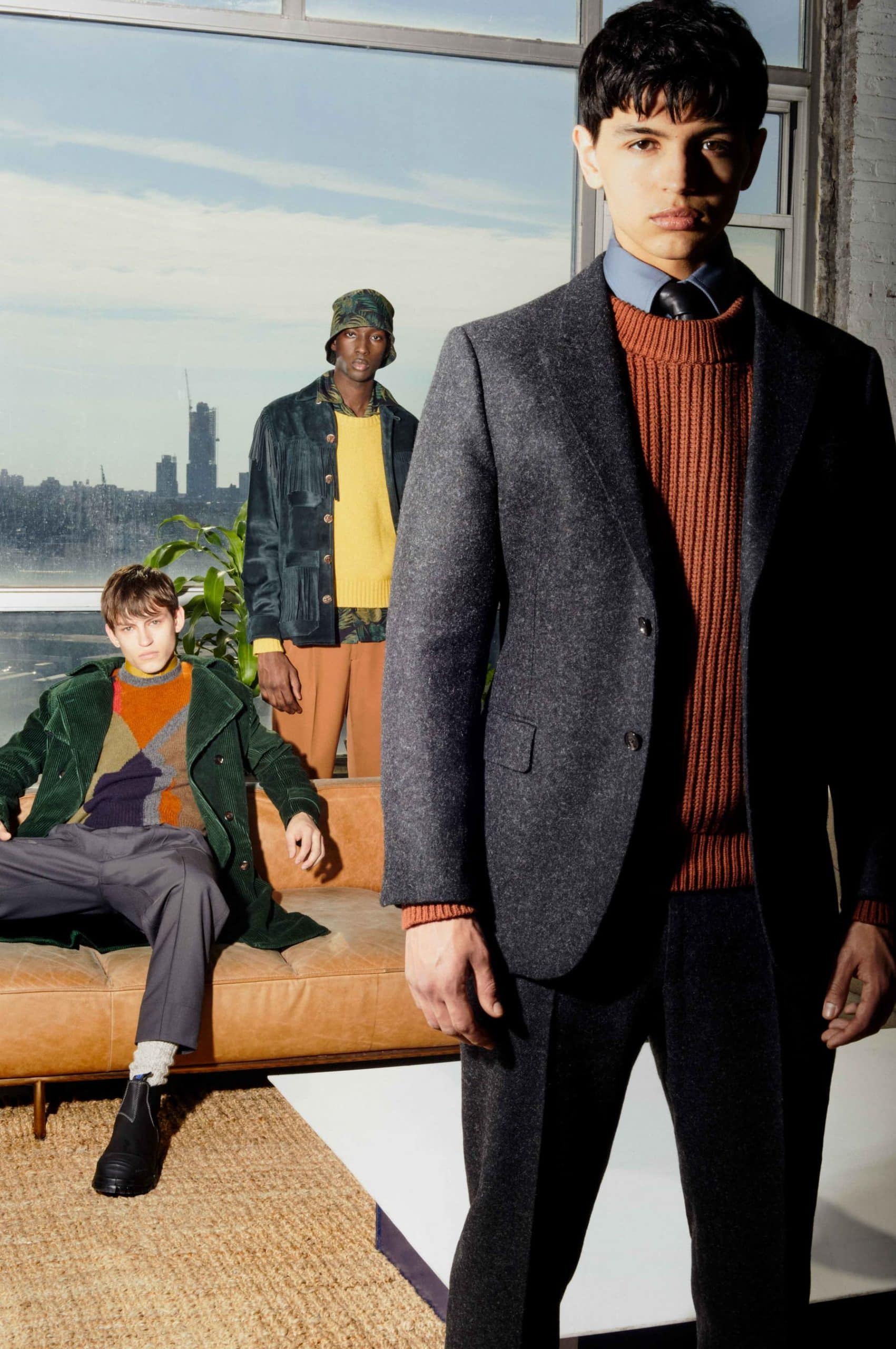
For example, Teddy Von Ranson is another example of this men’s commercial clothes – that’s excellent news. Still, the collection does not merit being presented as a young men’s designer brand, even if the brand started in November 2018. Timo Weiland did his version of the WFH wardrobe in the same breath, lacking any other inspirations to craft a clothes collection. The group designer added a little bit of the dressing-up game with a red double-breasted jacket or a single breast jacket in light pink just in case of a Zoom live broadcasting as the red and pink colors are more potent on the smaller shared screen. Perhaps, a double breast jacket half in black and half in milk chocolate wool now qualified as avant-garde fashion!
It isn’t easy to assess what the brand Timo Weiland stands for now with this photo release.
Fresh from winning the 2020 Fashion Group International Rising Star Awards for All Gender Collection, the designer Aaron Potts continued the trajectory he set forth last season with a new collection of genderless clothes. Potts favored the cocoon and boxy shapes garments, like a massive grey coat or a loose light grey coat with shorter sleeves, with the layering of coats and tiered skirts in vibrant bright yellow and grey jersey, and with oversize grey wool and faux mohair fabrics jumpsuits and long charcoal tunic and pants.
With the help of cast members from the Alvin Ailey Dance Theater, who performed for the video and the lookbook images, Potts gave the clothes that extra push. At times, there is a whiff of Charles Jeffrey, the London designer, but without the humor and the creative spark that can give rise spontaneously to fantastic fashion. But here is essential – Aron Potts is a fashion designer. Hopefully, he will focus his energy on innovative design, whether genderless or male-only, as he embarks forward.
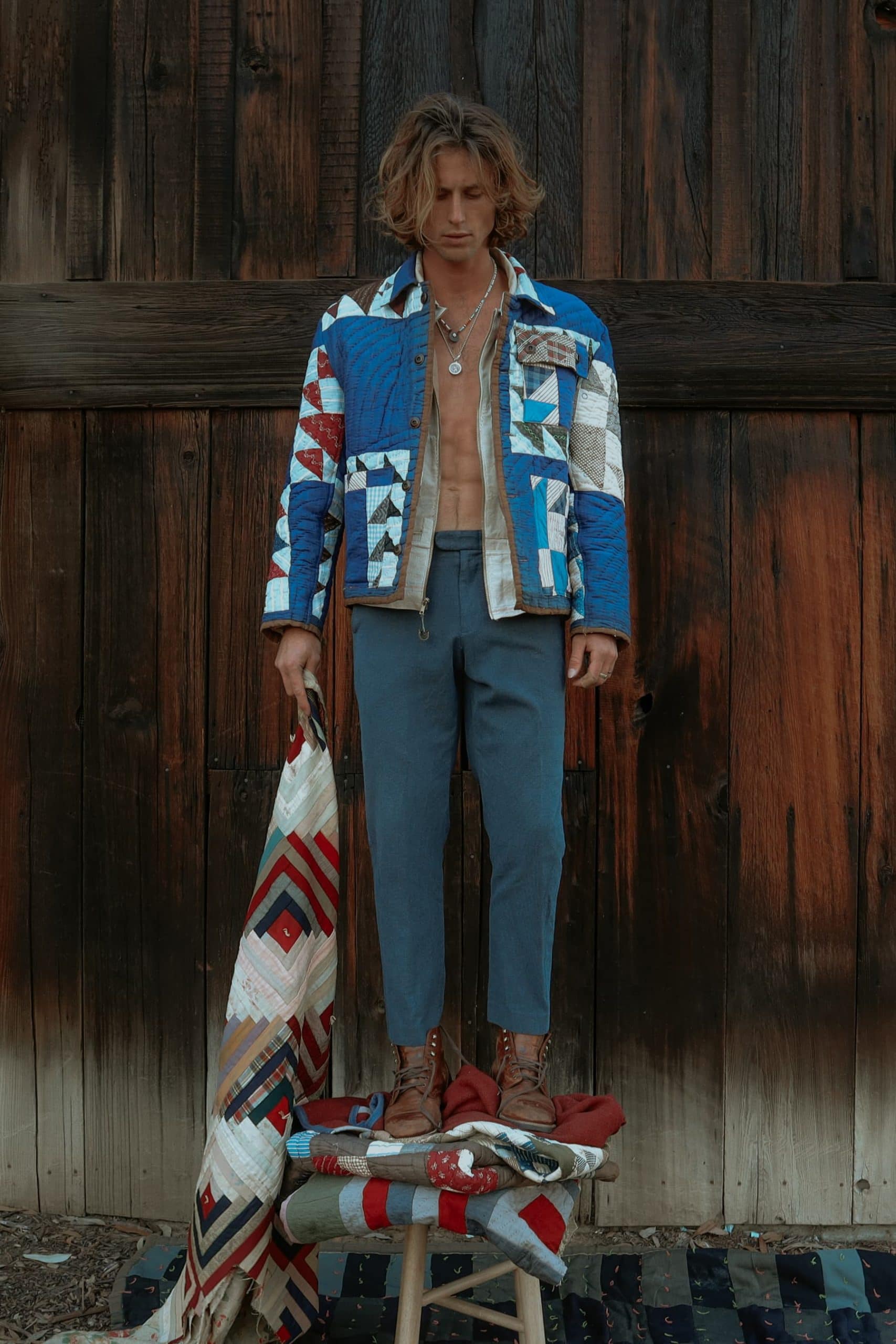
The surfer designer Tristan Detwiler indeed has a firm foundation for his Stan clothes, made from old textiles, ancient quilting fabrics that he used extensively in the clothes he made for his two years old brand. In a moving short video shot at the Bumann ranch in the Olivenhain countryside north of San Diego County, there is a story of a community that made these quilts that weave generations of history together on clothes. The Bumann Quilting group of locals told stories from each family generation are passed down in fabrics and each quilt’s narratives.
“I belong to the last generation to remember the ranch when it was 488 acres when horses farmed it, and I helped in the last grain harvest. I have been the recipient of stories passed down by generations, and now I am becoming the storyteller to the next. If I am not successful, much of what happened will be lost,” the voice of Richard Bumann said in the opening scene of Stan’s presentation.
Detwiler’s work expressed the authenticity in the assortments of a colorful quilted boxy single breast jacket worn in the way it was handcrafted and mended from the old cloths with a pair of loose shorts.
A rowing blazer made from surplus dead stock or out of actual quilts or a wrap skirt in colorful prints from a large blanket. The ecru pattern coat with cut-outs to match the details of the old fabrics with flowing sleeves and a shorter version with the same wave cut-outs along the trim edges are standouts, along with the light brown wool short sleeve hood cardigan with fringes.
While Stan has a specific view of specific clothes, the collection reminisced Emily Bode’s work. She deploys the same principles in recycling and repurposing fabrics not customarily used for clothes. At least these young designers are on board with clothes’ values when measured against pollution and waste and how they can help propel an ethos that can curb such dangerous environmental impacts.
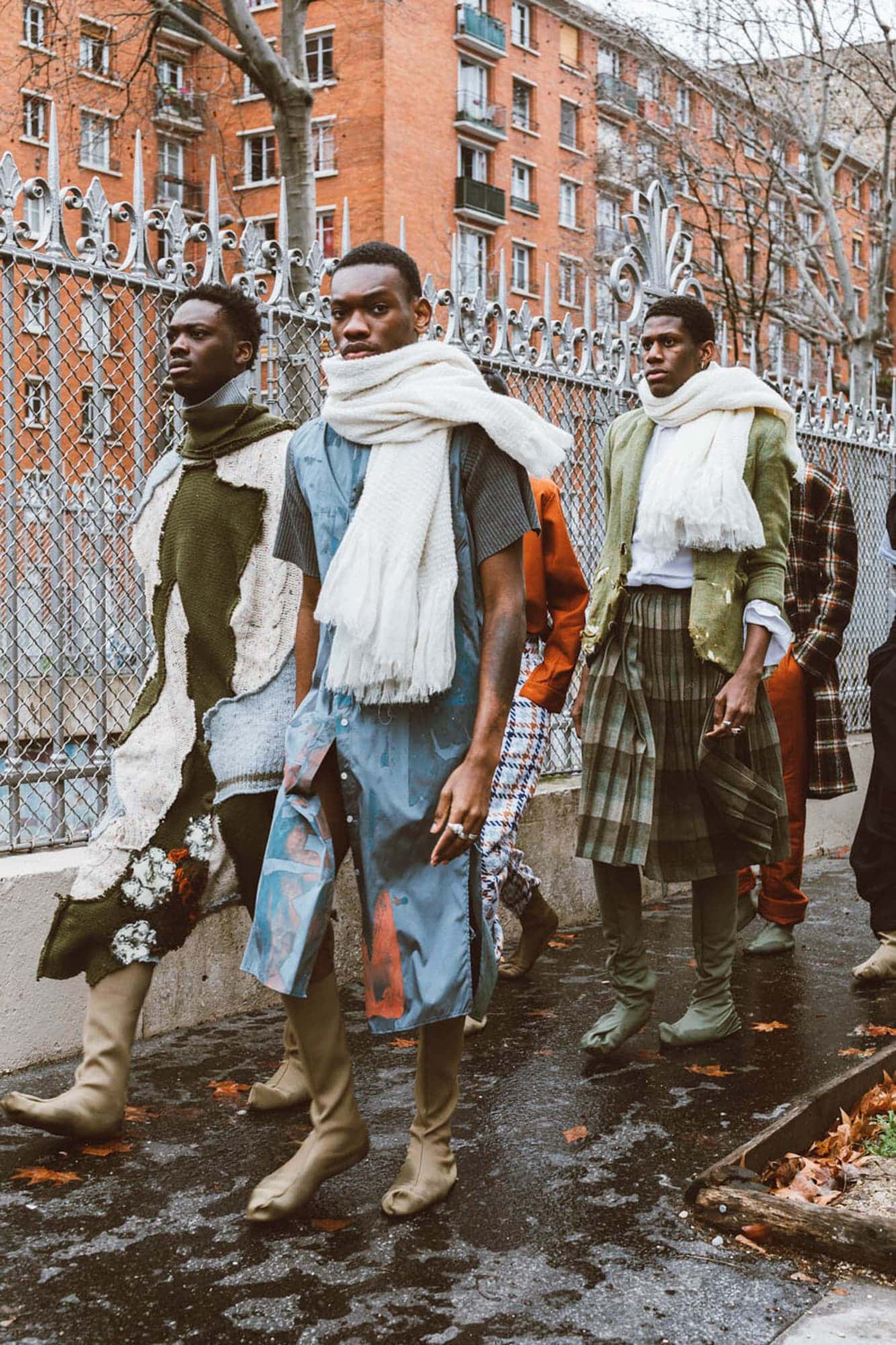
Another talent of note in this men’s compendium is Chelsea Grays.
Growing up in East Cleveland then moving to Cleveland Heights, Chelsea Grays attended a master’s program at the Academy of Art in San Francisco. She enrolled in sewing classes, learned how to make clothing, and graduated MFA in 2019 with specialties in pattern cutting, mixed media, and fashion atelier crafts. Her graduation thesis presented in September 2019 in New York as part of the Academy of Art University annual graduate show focused on the homeless culture in the Tenderloin area in San Francisco.
She contrasted the way homeless people combined fabrics and garments into one, disregarding any sense of traditional proportions with high waist pants and sleeveless coat with all over patches of materials swatches and a vest with unevenly cut patterns of wool gingham.
For this fall, Grays paid homage to the year 2020, manifested in the slight looks of chaos in the clothes made with patchwork fabrics and cut asymmetrical as if she had assembled these clothes in a hurry.
Grays has a thing about wrapping her clothes with her social and political thinking, making the clothes for offering her commentaries in clothes. This season for her new fall, Grays made a short video of a small group of guys in Paris wearing clothes that reminisced her Academy of Art showing in September 2019. Here, Grays showed her odes to the year 2020 with her patchwork clothes made in prints and patterns fabrics with a bend towards utilitarian and military garments like an asymmetrical patchwork tee-short dress, a skinny cropped olive jacket paired with an uneven cut crown shorts, or a similar cropped jacket worn with a pleated brown plaid skirt, and a cropped jacket with a long denim shirt-dress.
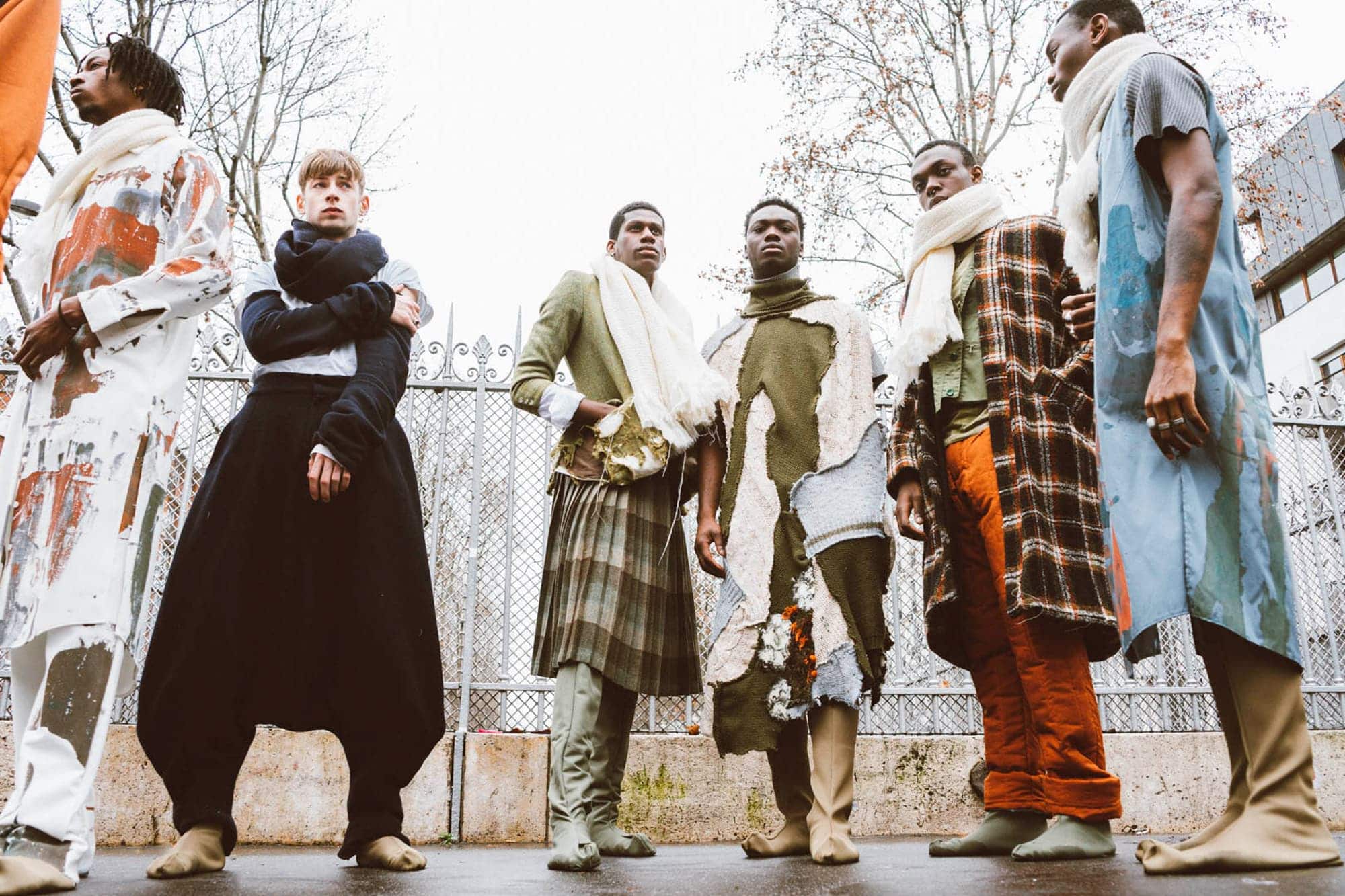
Grays’s new collection shown in this video did not break any new grounds for her or men’s fashion. There is still a hope that in future seasons she will marshal her energy to establishing a voice in men’s fashion without abandoning her principles.
Once upon a time, emerging designers made fearless fashion straight from their beliefs and what they think fashion should be. They contorted the fashion system to their ideas, and their collective work allows us to see a greater depth of creation. But that was then.
MAISIE WILEN
Maisie Wilen is a women’s fashion brand founded in June 2019 by Maisie Schloss, a designer working at Yeezy, before being funded with seed money to launch her independent brand with the first showing last September for the spring 2021 debut season.
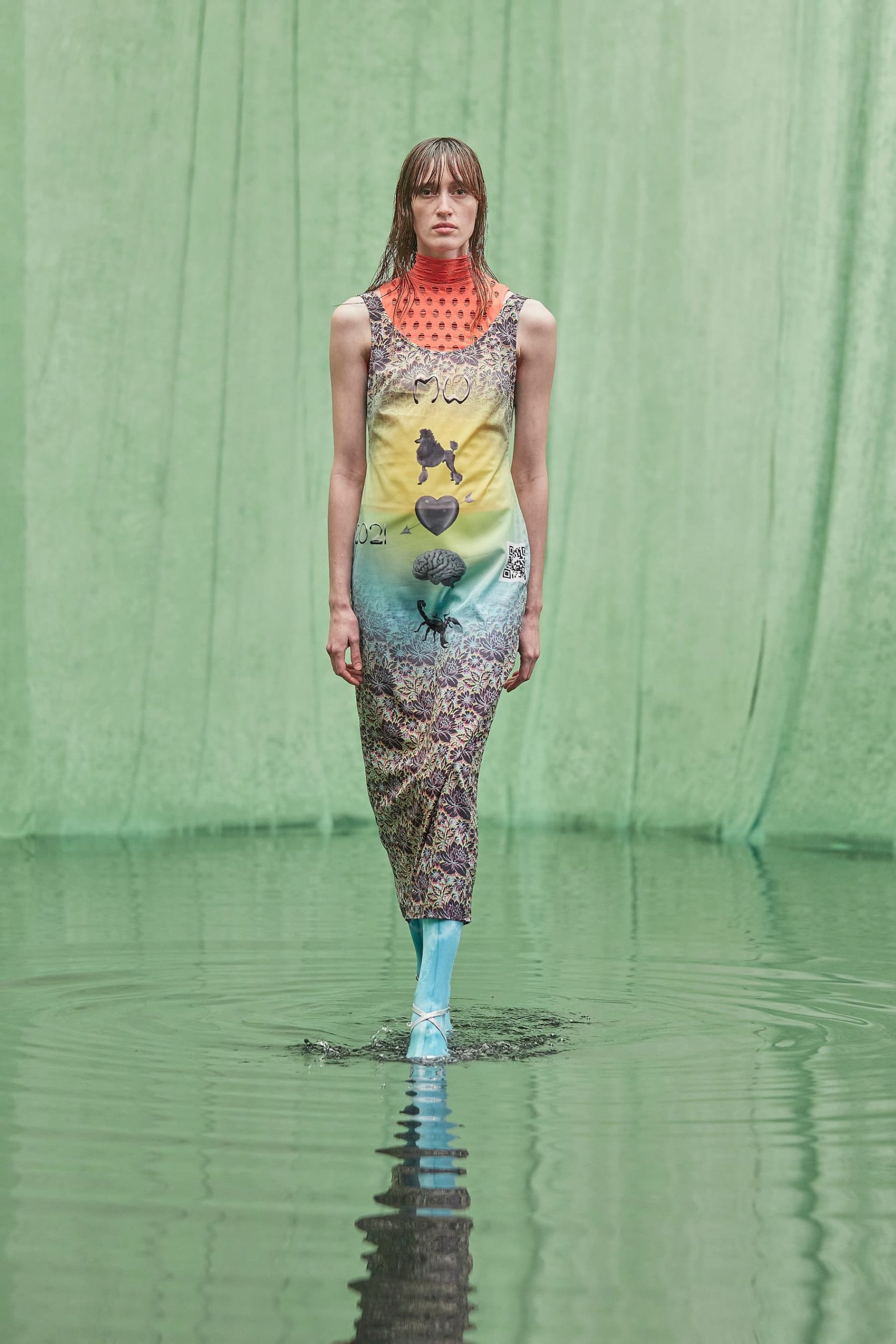
In a slow-moving short film directed by the New York-based film studio André Bato, the models walked in light footwear into a square room with about half a foot of water on the ground. They splashed the water lightly as they crisscrossed the space in a diagonal direction. The soundtrack consists mainly of loud voices of people talking like people do while waiting for an actual fashion show.
The models walked in strappy light heels within a space contained by light green draped curtains, the collection, shown in three parts, and a separate finale. The show reprised the Balenciaga fall 2020 stage setting last February in Paris but with none of the thinking and the sartorial innovations.
Unfortunately, the clothes showed, like the imitation show format lifted from another designer, are nothing new.
None of these looks – the long broad, dropped shoulder long coat or a similar version in a light yellow and grey print with matching micro skirt and strappy corset top with white lace trims, a strappy blueprint short dress with matching tights, or for that matter, a long sleeve stretched gray-orange print asymmetrical short dress – are either innovative for their shapes or the use of materials in their constructions.
Some of the low waist pants shapes reminded me of Lee McQueen’s ‘bumpster’ pants, although these aren’t that radical. But besides the fact that these clothes are mere derivatives and not originals, what exactly is the point of this collection that lacked the clarity of vision is unclear.
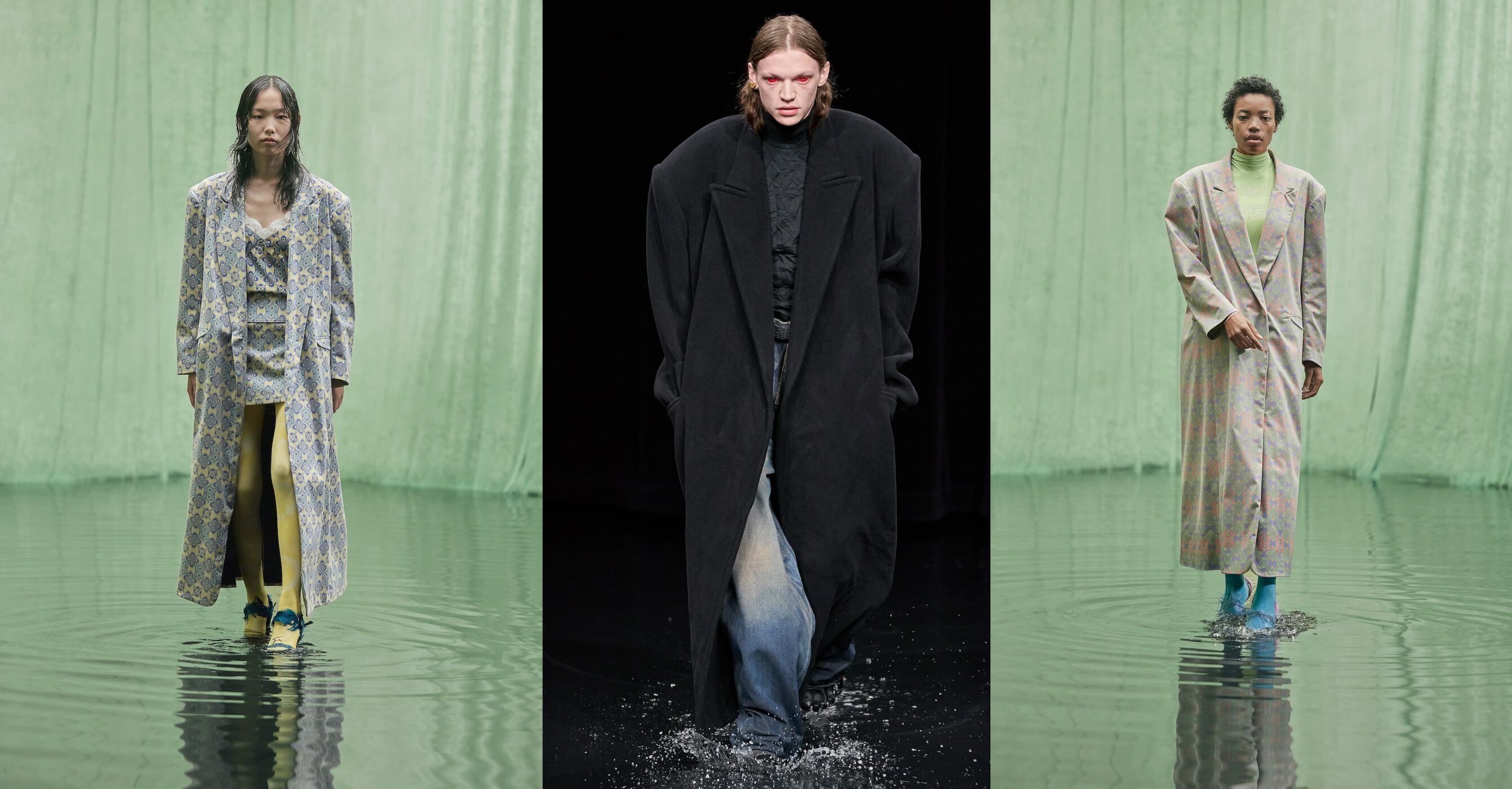
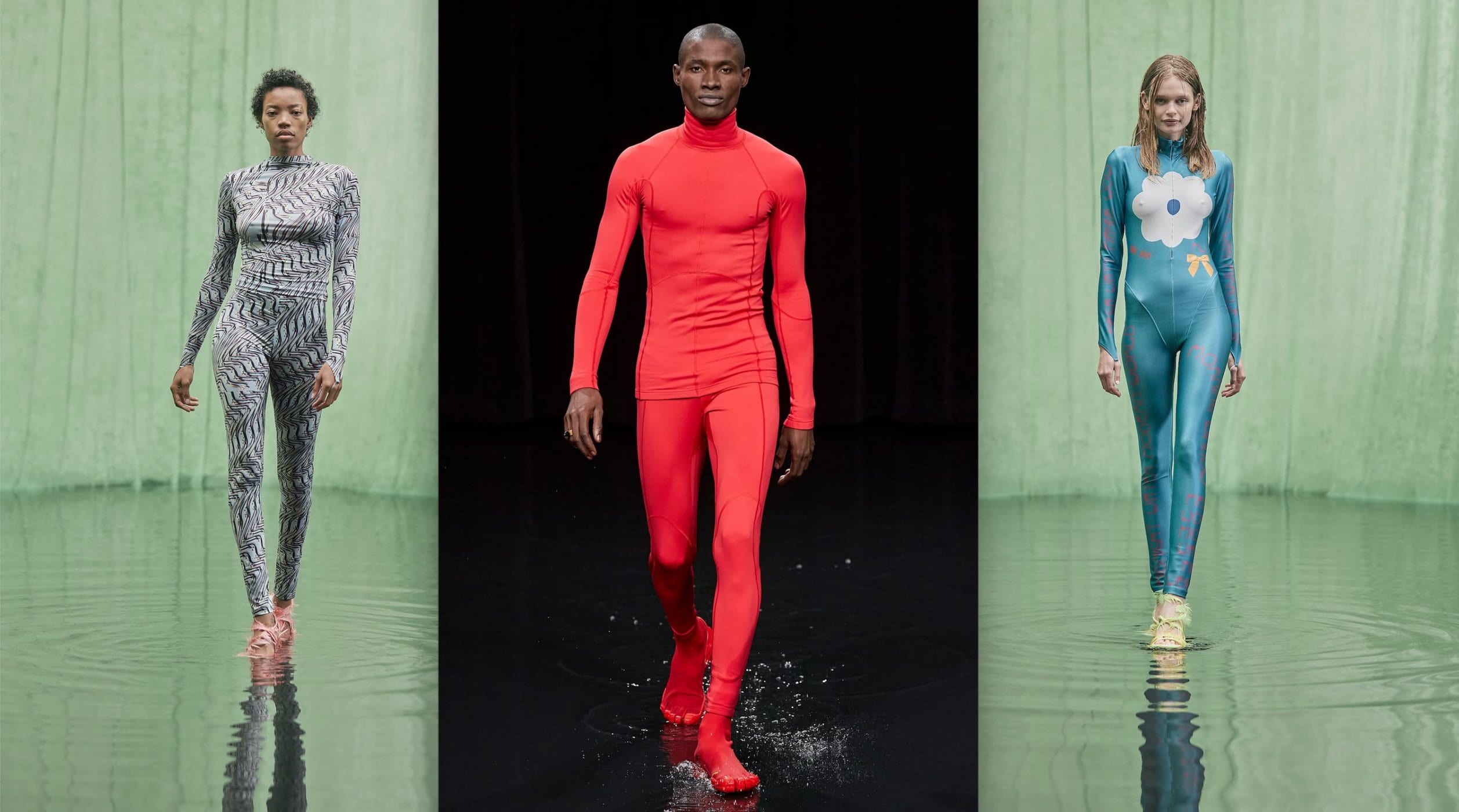
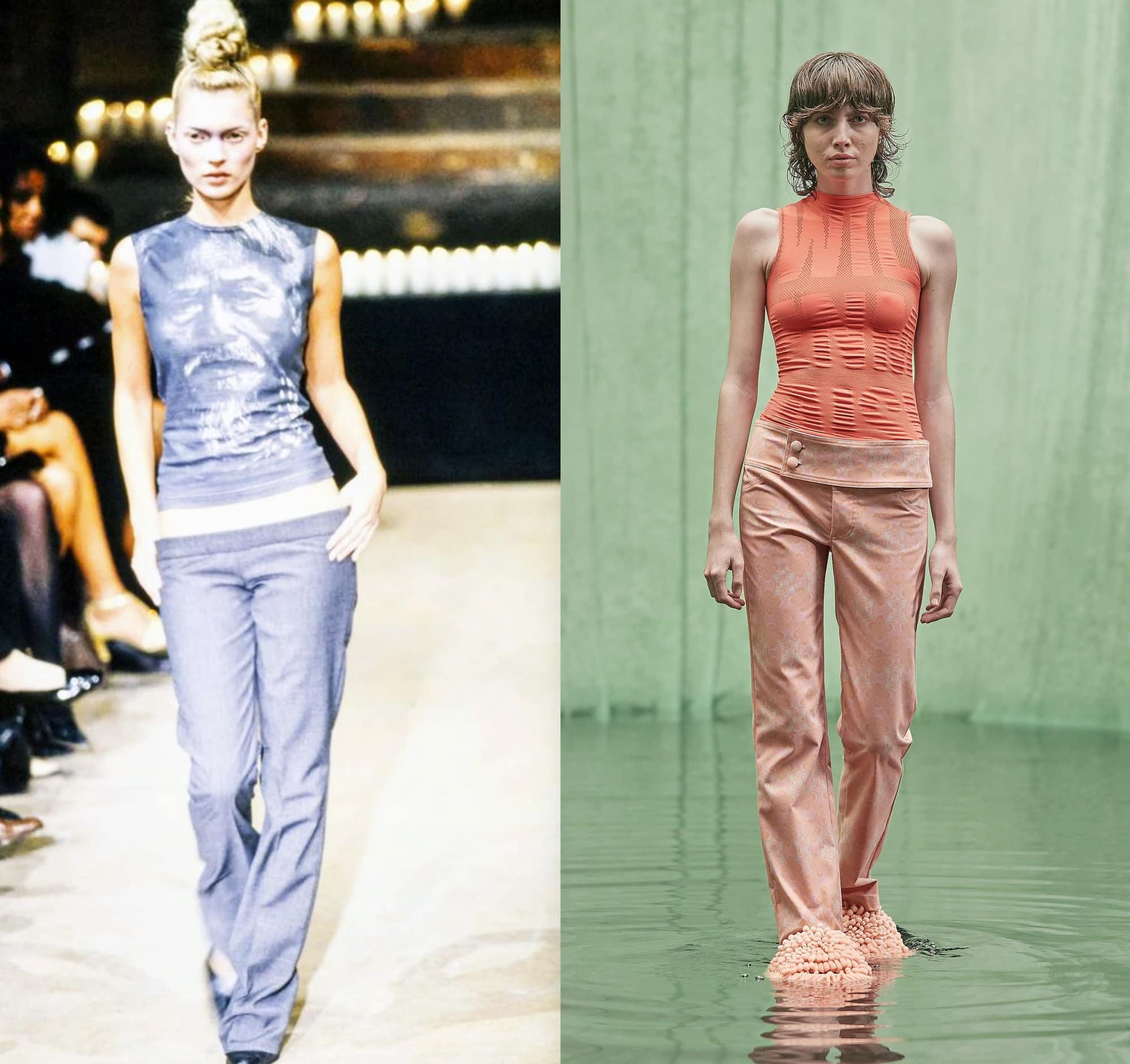
Does anyone still remember that famous rock and roll song from Robert Gordon titled ‘Too Fast to Live, Too Young to Die’ released in 1982? An album from another era in time, one that may serve fashion’s obsessions with driving up designers with little talents to the stratosphere only to encounter real turbulences high in the air like the Greek myth of Icarus.
Fashion is in New York and is in serious trouble if collections like this pass today as a trendy designer’s breakthrough work.
GEOFFREY MAC
In the spotty multiscreen video titled Midnight Rider, the Brooklyn-based designer Geoffrey Mac, having won the 18th season of Project Runway in March 2020 that included a mentorship with the CFDA, has been working in different fashion arenas over the past decade.
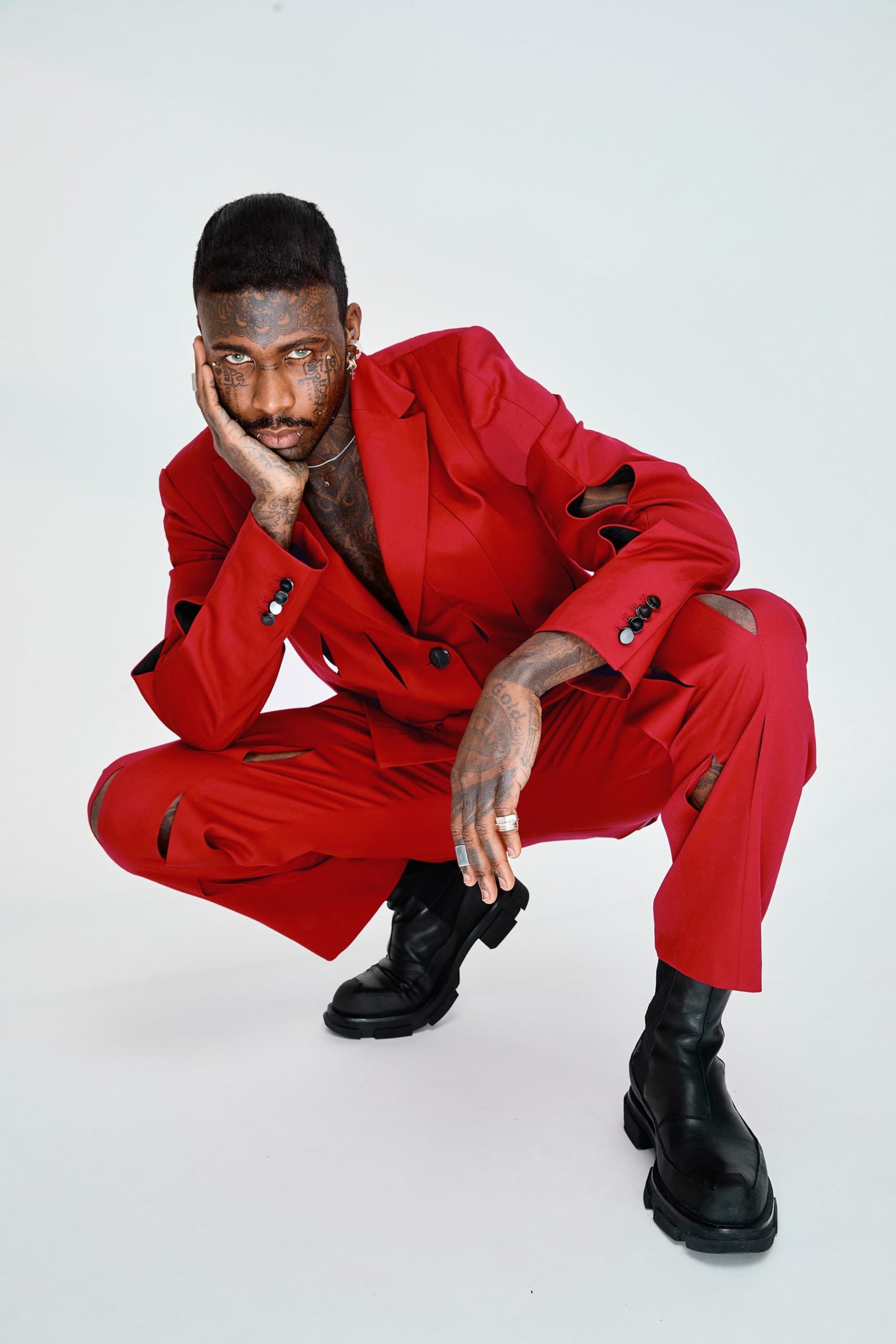
For this men’s collection, Mac drew from the 1990s club kid scene with techno music. With a background and knowledge of pattern making and garment constructions in clothes that reflect a different sensibility, the current waves of men’s fashion tended to erase the men’s side in favor of a softer approach more suitable for genderless kind of style. None of that gender fluidness is present in this fall collection. It is the exact opposite.
Mac’s fall clothes firmly focused on the male body and hardly the types of garments destined for both genders.
The tight-knit tee shirt with a shoulder sleeve bolero worn with fitted pants, the coarse, rough, and structured but not tailored light blue jacket with decorated shoulders, the black leather coat paired with a black net tank top, and leather pants are the backbone strength of this collection. These clothes reminded me of the aesthetics early days of John Bartlett in the mid-1990s, who used his fashion to highlight the extreme of the male body worship, albeit underground, not in the open like the Greek Hellenist era.
In choosing several muscular models for the video and the accompanying look book, Mac brings back this male aesthetics of yesterday, contrarian to the genderless looks of now.
In the early-2000s, as a testament to the constant fluctuations of how to represent men’s aesthetics, the skinny waif male models replaced all of the muscular men, displacing them to the underground instead of mainstream. These waifs were then shuffled off the scene by the mid-2010s when the bigger guys made a return only to be displaced once more by the genderless era in a continuous cycle.
Regardless of one’s aesthetic flavor, there are plenty of beautiful clothes here. Mac is operating his brand on a made-to-order basis rather than prefabricating any of the products. The blue biker collar coat, the black leather slashed jacket, the grey velvet bolero-tank, or the simple black leather suit is among the easy picks.
